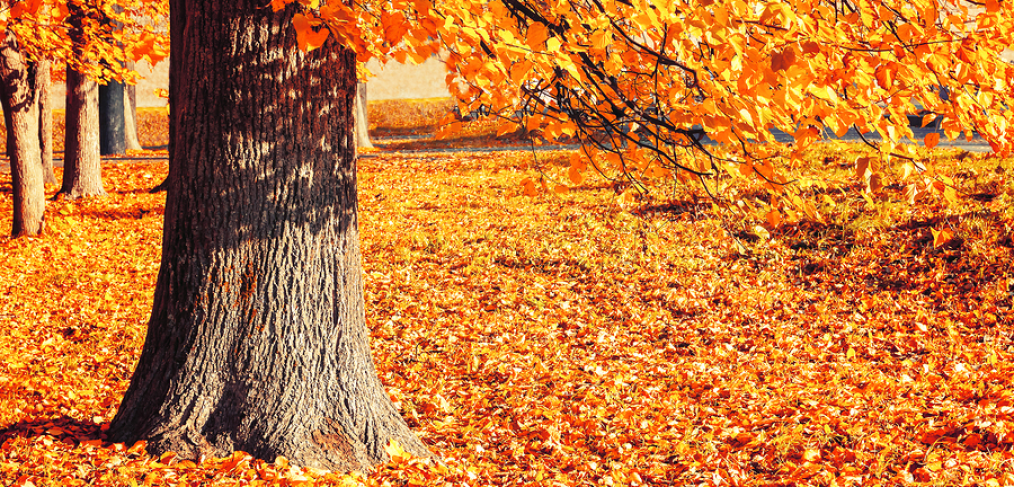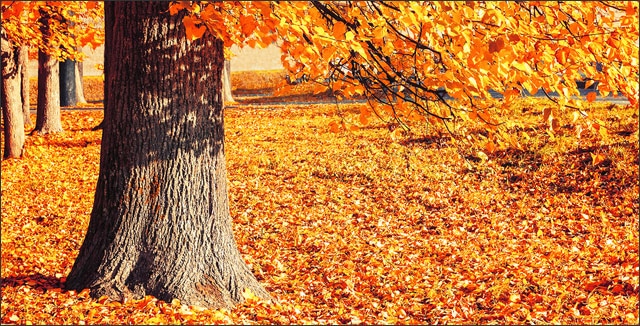
How to Compost Leaves and Why You Should

Have you thought about trying to compost leaves?
Most of us think of the leaves on our trees with a kind of dread, knowing that it will inevitably require a lot of time and backbreaking labor spent raking, mowing, hauling, and burning.
Or we fear what will happen to our lawns or our relationships with our neighbors if we don’t do the yearly raking. I can remember the years of childhood spent raking leaves and getting blisters. The piles were fun to jump in for a while, but mostly it was just a lot of work!
What most of us may not know is how valuable fallen leaves can be for our lawns or gardens. This nuisance is a vital source of minerals that could go directly back into your garden as soon as the next spring if you take all the right steps.
In addition, with the right equipment and the right plan, composting leaves can become second-nature each year rather than the dreaded chore it seems to be.
Why You Should Compost Leaves
The Nutrient Density of Leaves
Most trees from which your leaves are falling are deep-rooted and therefore can absorb minerals from deep in the soil. Your trees pull minerals and get them to you more efficiently than anything else in your yard.
A pound of leaves can provide twice as many minerals as a pound of manure. A sugar maple leaf, for instance, has over 5% mineral content.
Pine needles provide up to 2.5% of their weight in calcium, magnesium, nitrogen, and phosphorus as well as many other essential trace elements that can be missing in our diets.
Leaves Provide Fiber and Hold Water
Fallen leaves don’t just provide your soil with important minerals. They are an excellent source of organic, fibrous matter that will improve the structure of your soil.
A forest floor is an excellent example of how leaf mold – that layer of decomposing leaves – becomes integral to a healthy, functioning biome.
Leaf mold is the layer above the mineral soil in a forest. When you feel that soft, springy texture underfoot, that’s the leaf mold.
Slowly decomposing leaves provide forest plants with gradually released nutrients. As the mold slowly decomposes, the soil underneath becomes richer over time and is improved in texture and quality.
Here is one of the most wonderful aspects of leaf mold: its ability to retain water. Regular subsoil holds 20% of its weight in water, while rich topsoil holds 60%.
Leaf mold can retain up to 500% of its weight in water. In terms of mulch that will feed and water your soil and garden plants, your fallen leaves have no equal. Leaf mold can improve any soil. It aerates clay-heavy soils, and it keeps sandy soils from drying too quickly.
How to Compost Leaves
I am sure you are convinced about why you should compost your fallen leaves. Who wouldn’t be convinced? It’s free money.
The problem is more about how to get that soggy pile of sadness into a workable format for composting. You can’t exactly plan when all your leaves will fall. It would be great if you could, right?
The first thing you need to know about turning those piles into garden gold for spring is that your leaf piles will need nitrogen. It’s the one mineral your leaves need to break down faster.
If you have access to manure, all you need is 1 part manure to 5 parts leaves, and to make sure you turn those leaves often. Come spring, you will have a good pile of rich compost.
Other sources of nitrogen include dried blood, cottonseed meal, bone meal or Agrinite. Without the added nitrogen, your leaf piles will take a long time to break down and in the meantime become a packed, soggy mess. That may be why they have such a bad reputation.
The other element necessary for successfully “harvesting” your leaves is shredding or breaking them down into small pieces. You may not think this is very important. However, if your goal is to have a pile of compost for spring, and not to break your back turning that pile throughout the winter, shredding is your best bet.
Leaf Shredding Strategies
Leaf shredding tools is the easiest way to get through all your leaves each season. A lawn sweeper is faster and easier than raking. It has the added benefit of allowing you to collect your neighbors’ leaves. Additionally, they will be overjoyed to have you take care of theirs too.
A rotary mower that is not self-propelled can be adapted for use on leaves very easily. If two people are doing the job, raking and mowing over a large pile of leaves can be accomplished in a day.
Of course, a leaf-mulching attachment on a lawn mower will shred your leaves. The downside is you will end up having to rake the pieces at the end to gather them.
Compost Checklist
Here is your at-a-glance guide to composting your leaves:
- Shred or grind your leaves
- Add nitrogen-rich material to your pile at a rate of 1 to 5
- Turn your pile frequently; once a week or more
- Keep the pile damp, but not wet
- Cover with a tarp to trap heat and speed break-down
Alternative Ideas to Leaf Composting
If you have a large amount of land with many trees, you can keep a leaf mold “pen” at the ready. Instead of burning all those leaves, why not save them in one spot, ready to use as mulch the following spring?
This leaf mold won’t break down quite the same as the leaves on a forest floor, but they can still provide tons of function to your garden.
Another idea is to use your fallen leaves as bedding if you have manure-producing animals. Mixed with straw and manure, your leaves will break down quickly in a compost pile of their own that can then be used anywhere on your garden.
Bringing it Home
Your fallen leaf piles have a high mineral density, the ability to hold large amounts of water and to break down fast when mixed with a nitrogen source.
Don’t pass up the opportunity to compost leaves and use this natural resource in your garden for mulch or garden fertilizer in the spring! With just a few quick steps this fall, you could avoid paying a single dime for compost in a few months.



